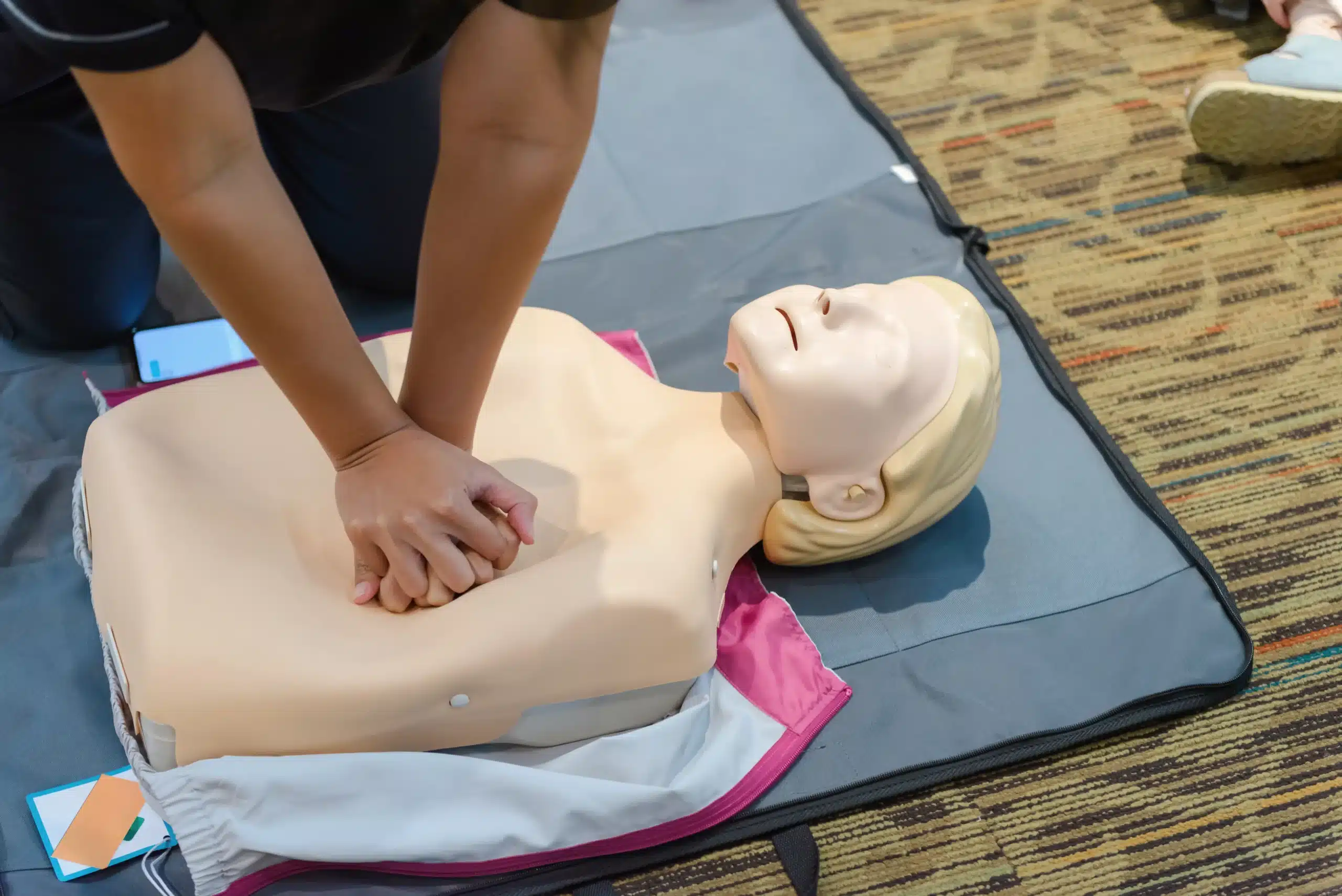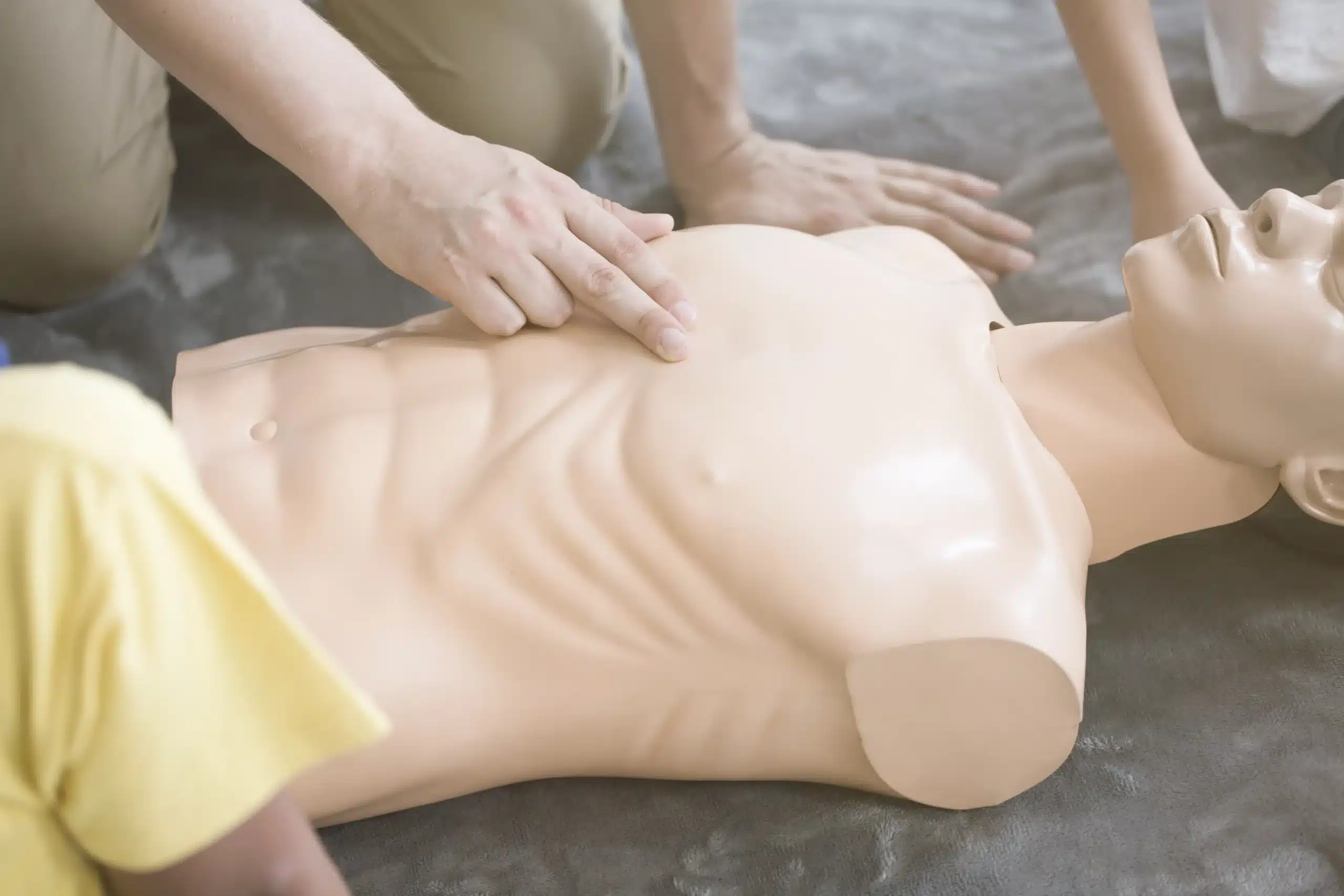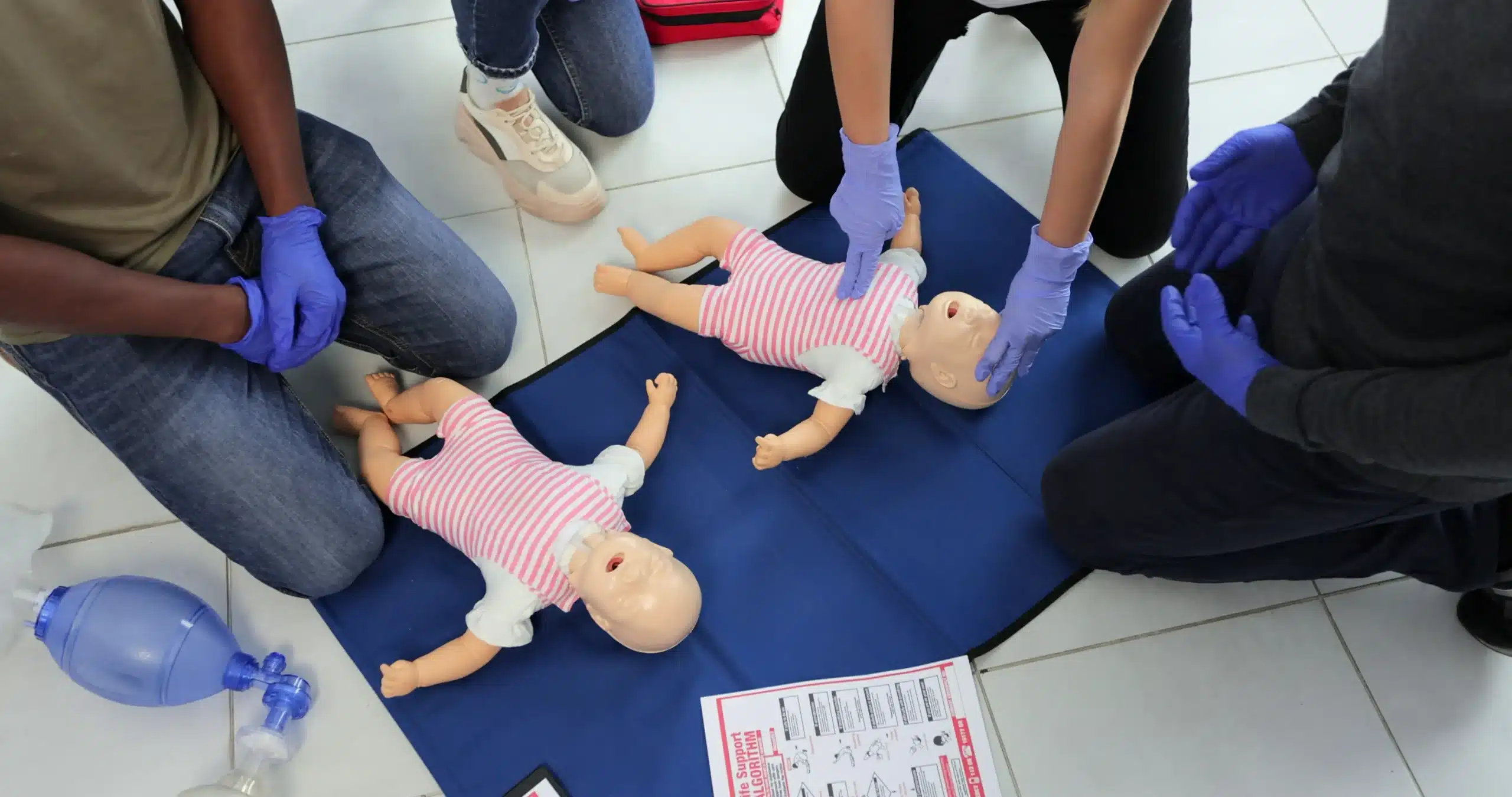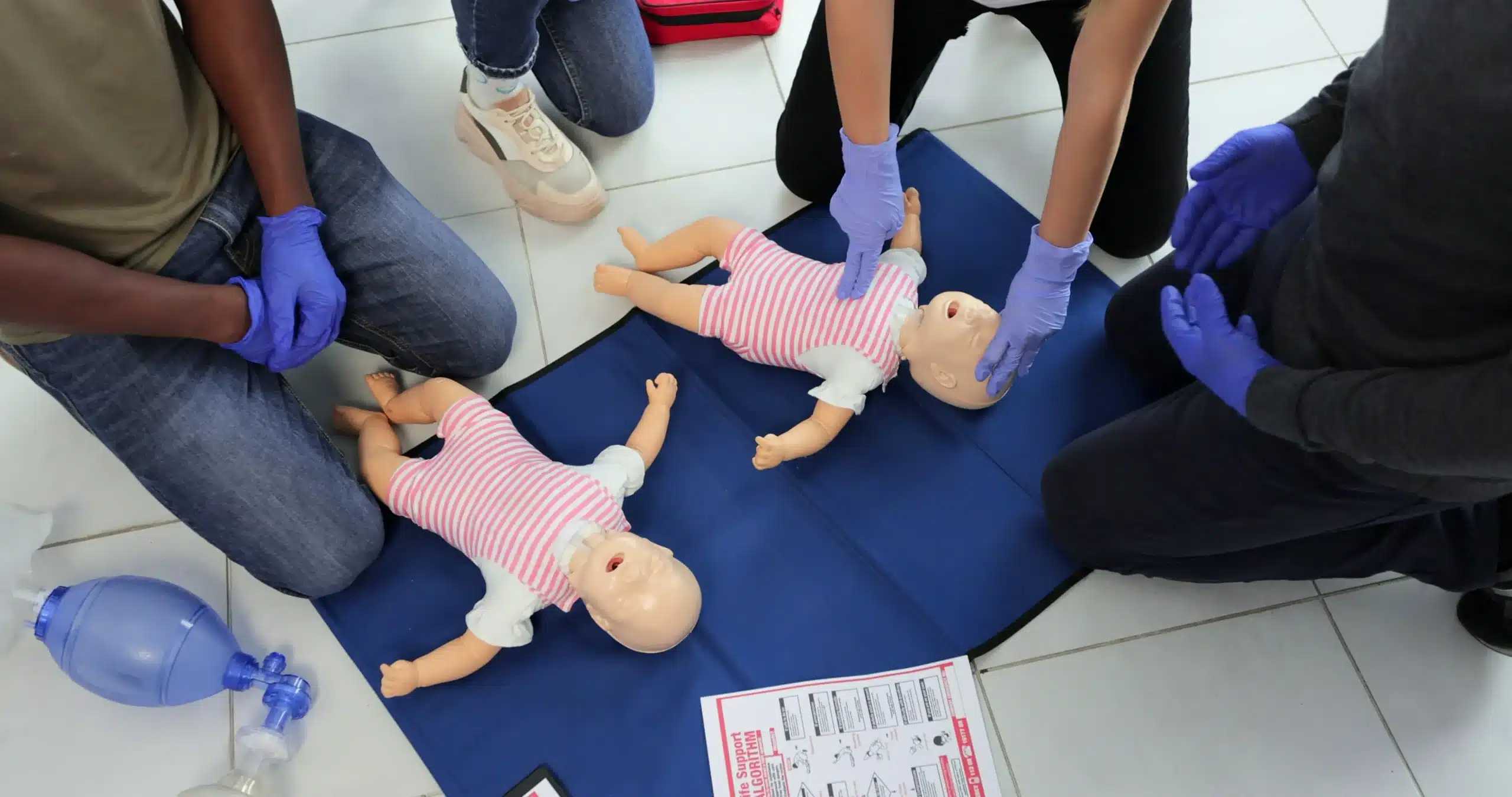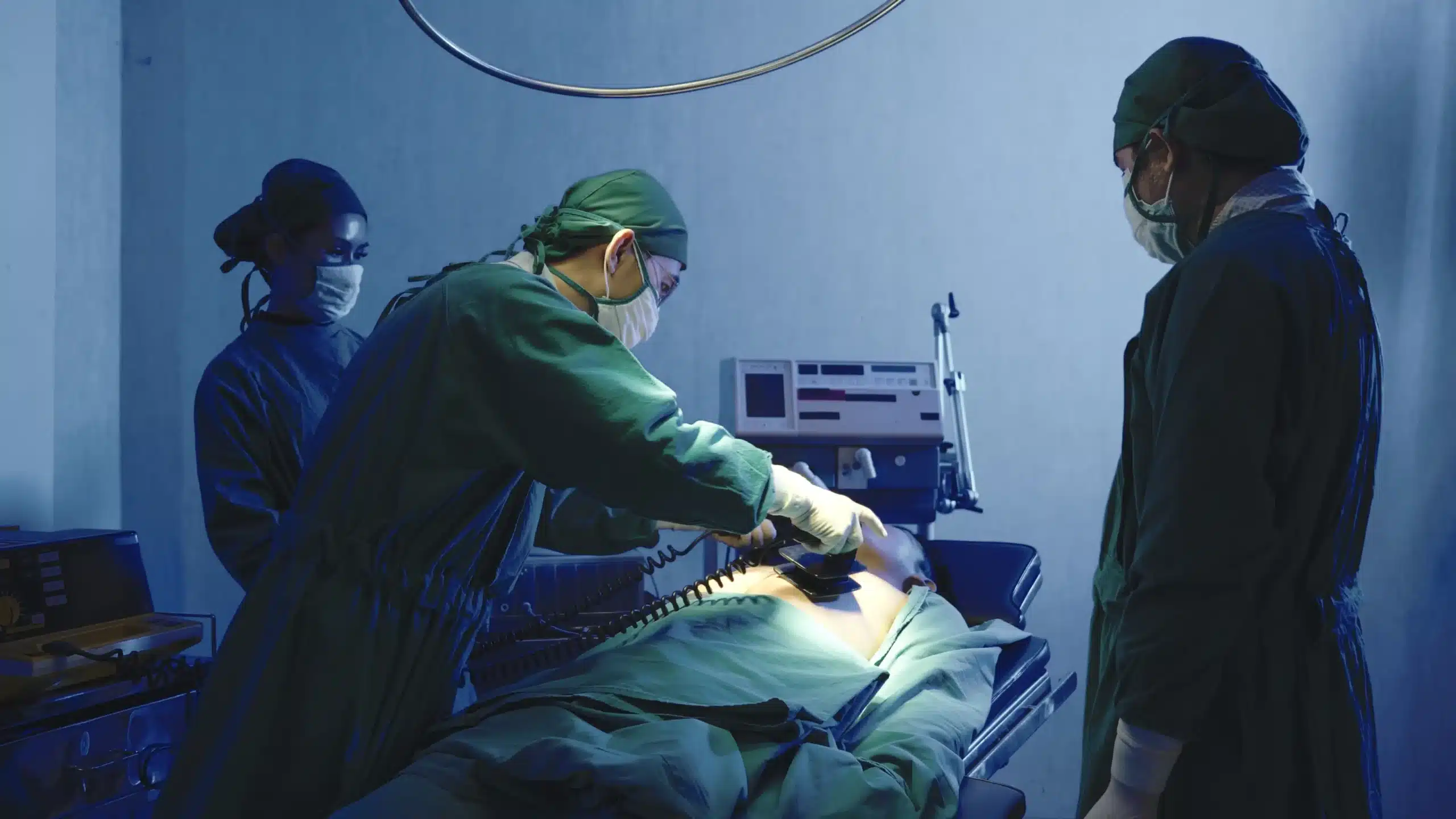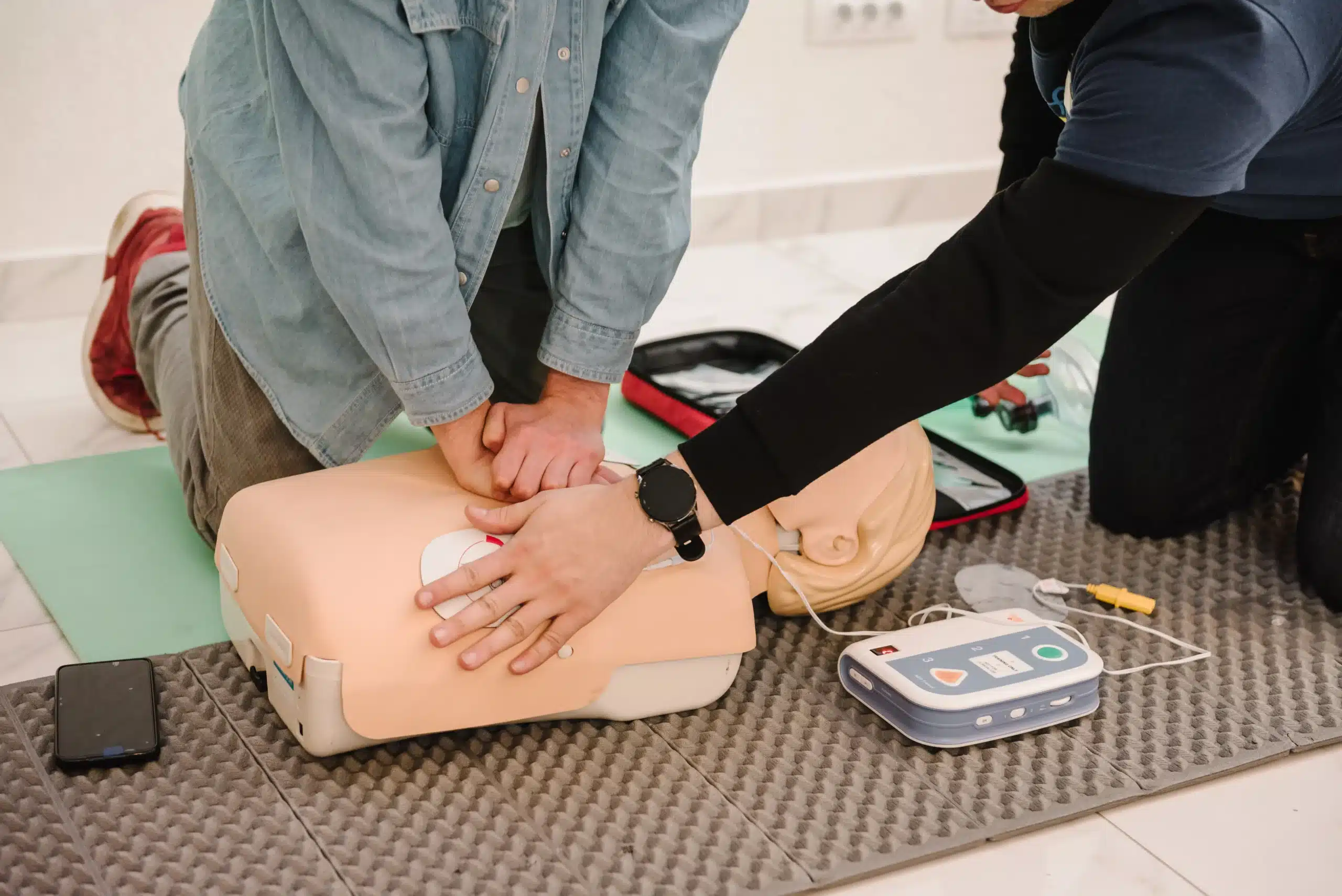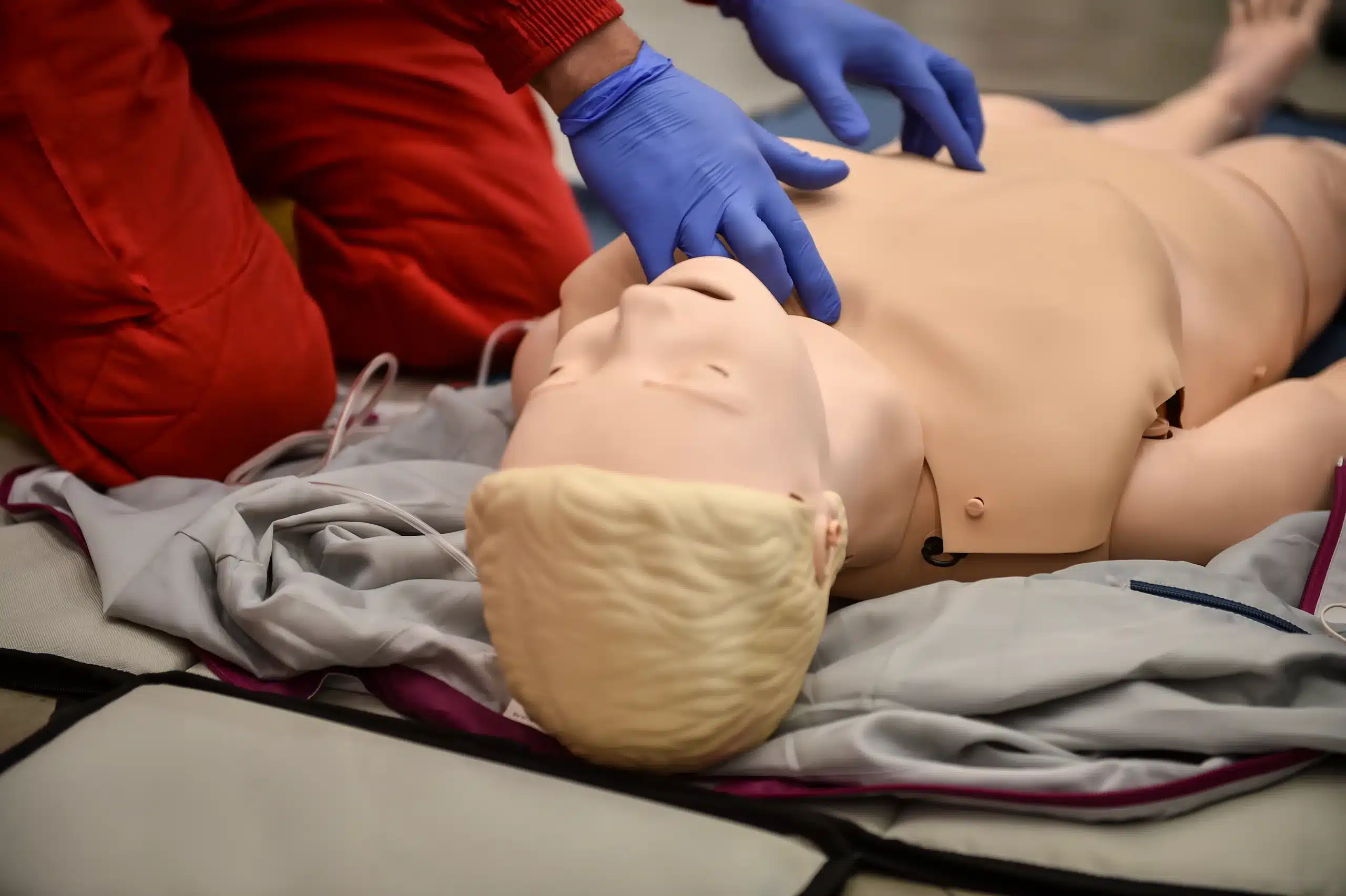Medical emergencies can happen anytime, anywhere. Are you prepared to respond? BLS certification gives you the skills and confidence to act quickly and effectively when every second counts. This comprehensive training covers essential life-saving techniques, including CPR, AED usage, and airway management. It’s a valuable credential for healthcare professionals and anyone who wants to be prepared for the unexpected. If you’re seeking BLS certification in Alameda, this guide will provide you with all the information you need. We’ll explore course content, available formats, costs, and reputable local providers. We’ll also debunk common myths about BLS certification and highlight the many benefits it offers, both personally and professionally.
Key Takeaways
- BLS certification empowers you to act in emergencies: From healthcare professionals to everyday individuals, BLS training provides the skills to confidently respond to critical situations, making a real difference when it matters most.
- Finding the right BLS program is key to your success: Seek out an AHA-accredited program with qualified instructors, convenient scheduling, and a learning environment that suits your needs. Consider factors like cost, format, and available resources.
- Maintaining your BLS skills is an ongoing commitment: Stay up-to-date with the latest guidelines and renew your certification regularly to ensure your skills remain sharp and you’re always prepared to provide effective care.
What is BLS Certification?
Definition and Importance
BLS certification equips healthcare providers, and anyone who wants to be prepared, with the skills to respond to life-threatening emergencies. Think cardiac arrest, respiratory distress—situations where rapid intervention can make all the difference. It’s foundational training that emphasizes the importance of immediate, effective action. BLS certification plays a crucial role for healthcare professionals like nurses, giving them the tools to handle critical situations. Having this training offers a range of benefits, from increased confidence and preparedness to improved life-saving skills and even better career opportunities. BLS training is often a requirement for many healthcare roles, demonstrating a commitment to patient safety and high-quality care. For those in Alameda, you can find BLS Certification in Alameda at Safety Training Seminars.
Skills Learned in BLS Training
In a BLS training course, you’ll gain practical skills applicable to various medical emergencies. The curriculum covers essential techniques like CPR, using an AED (automated external defibrillator), and managing airways. You’ll also learn how to help someone who is choking. These are fundamental skills that can help save lives. BLS certification training provides a comprehensive overview of these techniques, ensuring you’re prepared to respond effectively in a crisis. The emphasis is on hands-on practice, so you develop the muscle memory and confidence to act quickly and efficiently when it matters most. It’s about being prepared and empowered to make a difference in critical situations. You can find more information on our BLS training page.
Find Top BLS Certification Providers in Alameda
Finding the right BLS certification provider is crucial for a positive and effective learning experience. Here are a few reputable options in Alameda:
Safety Training Seminars
Safety Training Seminars offers AHA-certified courses in CPR, BLS, ACLS, PALS, and First Aid right here in Alameda. They’re known for their excellent customer service and competitive pricing. You can receive your certification card the same day you complete the class—super convenient. They also offer discounts for group classes, making them a great choice for workplaces or groups of friends. Check out their low price guarantee.
CPR Education
CPR Education provides flexible training with experienced instructors. They offer various classes, including AHA Heartsaver, BLS for healthcare providers, and Pediatric First-Aid with CPR/AED. This range of courses makes them a solid option whether you’re a healthcare professional or simply want the certification for personal preparedness.
AHA-Certified Courses
When choosing a BLS provider, make sure they offer AHA-certified courses. This ensures the training follows the latest AHA guidelines and earns you a widely recognized certification. AHA certification is often required for many healthcare jobs and volunteer positions.
Other Local Providers
Beyond these specific recommendations, you can find many other local providers offering BLS certification in Alameda. Look for providers like Alameda CPR Classes that offer easy online registration and various course formats to fit your schedule. Reading online reviews and comparing prices can also help you make a smart decision.
Explore BLS Course Formats and Duration
Finding the right BLS course format is key to successfully completing your training. Let’s explore the different options available.
In-Person Classes
In-person BLS classes offer a hands-on learning experience crucial for mastering essential BLS skills. You’ll work directly with certified instructors, practice on mannequins, and receive real-time feedback in a supportive classroom environment. Safety Training Seminars provides AHA-certified courses in Alameda, ensuring comprehensive training and same-day certification. This format is ideal for those who thrive in interactive settings and value direct instruction.
Online and Blended Learning
For those seeking flexibility, online and blended learning options are a great choice. HeartCode BLS combines online coursework with a hands-on skills session. This allows you to learn the theoretical material at your own pace and then demonstrate your skills in person. It’s a convenient way to fit BLS training into a busy schedule.
Typical Course Length and Flexibility
BLS course duration can vary depending on the format and provider. Many courses utilize blended learning, combining online modules with in-person practice. Safety Training Seminars offers flexible scheduling, with BLS certification courses available daily. This makes it easier to find a time that works for you and get certified quickly.
Understand BLS Certification Costs & Discounts in Alameda
Getting BLS certified is an investment in your skills and career. Understanding costs and available discounts helps you plan your training. This section breaks down typical pricing, highlights potential savings, and emphasizes the value of same-day certification.
Average Pricing
BLS certification courses in Alameda have varying price points, influenced by the training provider, course format (online, blended, or in-person), and included materials. Compare prices and check what’s included in the course fee before registering. Safety Training Seminars offers transparent pricing, so you can easily see the cost of different BLS courses and choose the best option.
Group Discounts and Promotions
Coordinating training for a group? Look for providers offering group discounts. Safety Training Seminars specializes in discounted rates for group BLS certification in Alameda. This can significantly reduce the per-participant cost, making it more affordable to train your entire team. Check with the provider about requirements and minimum group sizes.
Same-Day Certification
Convenience is key. Training with Safety Training Seminars offers the advantage of same-day certification cards. Complete your BLS training and receive your certification card all in one day, streamlining the process and allowing you to use your new skills immediately. This is particularly helpful for those starting new healthcare roles or needing to renew their certification quickly.
BLS Certification: Prerequisites and Requirements
Before you sign up for a Basic Life Support (BLS) certification course in Alameda, it’s helpful to understand the prerequisites and requirements. Knowing what to expect ensures you’re prepared for a smooth and successful learning experience. This section covers age limits, physical demands, recommended prior knowledge, and typical course materials.
Age and Physical Capabilities
Most BLS providers require participants to be at least 16 years old by the course’s end. This age requirement reflects the maturity level needed to grasp BLS concepts and perform the necessary skills. If your AHA BLS CPR/AED certification is close to expiring, you’re also eligible to enroll in a renewal course.
BLS involves hands-on practice, including CPR and using an AED, so a certain level of physical ability is necessary. You should be able to perform chest compressions and other physical tasks as demonstrated by the instructor. If you have any concerns about meeting these requirements, discuss them with the course provider beforehand. Safety Training Seminars is happy to answer any questions.
Prior Knowledge/Experience
While no formal prerequisites exist regarding prior medical knowledge, having a basic understanding of CPR is helpful. Familiarity with essential life-saving techniques gives you a foundation to build upon during the course. BLS certification is often a stepping stone to more advanced training like an ACLS course, especially for healthcare professionals working in hospitals. If you’ve previously taken a BLS course, be prepared to present your current certification card or documentation of prior training.
Course Materials and Preparation
BLS courses typically provide comprehensive training materials covering techniques for infants, children, and adults. These often include manuals, videos, and online resources. Reviewing these materials before class can give you a head start and allow you to maximize the hands-on training sessions. The course aims to equip you with the skills and confidence to respond effectively in emergencies, so preparation is key.
Get BLS Certified: The Process
Getting your BLS certification is straightforward. This section breaks down the process into digestible steps, from understanding the course content to hands-on practice and finally, achieving your certification.
Course Content Overview
BLS certification equips healthcare providers, and anyone interested in learning life-saving skills, with the tools to respond effectively to medical emergencies. The curriculum covers essential life-saving techniques, including CPR, recognizing and responding to cardiac arrest and respiratory distress, using an AED, and relieving choking. You’ll also learn about teamwork, communication, and the importance of immediate high-quality CPR. For a more detailed look at what’s covered, check out Alameda CPR Classes’ BLS Training Guide.
Hands-on Practice
Hands-on training is crucial for mastering BLS skills. Many courses offer blended learning, combining online coursework with in-person skills sessions. This approach allows you to study the cognitive material at your own pace before demonstrating your proficiency in a practical setting. HeartCode BLS is a great example of this blended learning format, allowing online learning followed by a shorter in-person skills session.
Exams and Certification
After completing the required coursework and demonstrating your skills, you’ll take an exam to receive your BLS certification. This exam assesses your knowledge and practical skills related to the course content. BLS certification is a valuable credential, especially in healthcare, demonstrating your commitment to patient safety and high-quality care. For many healthcare professionals, BLS/CPR certification is often a job requirement. Upon successful completion, you’ll receive your certification card, often the same day.
Benefits of BLS Certification
Getting your BLS certification is more than just checking a box; it’s an investment in yourself, your career, and your community. Whether you’re a healthcare professional, a concerned parent, or simply someone who wants to be prepared for anything, BLS training offers a range of valuable benefits. Let’s explore some key advantages:
Career Advancement
For those in the healthcare field, BLS certification is often a requirement and always a significant asset. It shows employers your dedication to patient safety and providing high-quality care. Many healthcare institutions prefer or require BLS certification for positions involving direct patient care and emergency response. CareRev notes how having this credential can significantly improve your career prospects and open doors to more advanced roles. It demonstrates a commitment to maintaining up-to-date skills and knowledge, crucial in this ever-evolving field. Integrity Health Education also highlights how BLS training can increase confidence and preparedness, making you a more valuable member of any healthcare team.
Personal Preparedness
BLS certification empowers you to respond effectively in emergencies. My CPR Certification Online emphasizes how BLS training provides the knowledge and skills to handle critical situations, giving you the confidence to act quickly when every second counts. This preparedness extends beyond the workplace, equipping you to assist family, friends, or even strangers in need. Knowing you can make a difference in a life-or-death situation brings invaluable peace of mind. Skill Up Health adds that BLS fosters teamwork and collaboration among healthcare professionals.
Relevance in Healthcare
BLS is fundamental to the healthcare landscape. Online Safety Trainer explains how essential BLS training is for healthcare providers, first responders, and anyone in public safety roles. These skills are crucial for responding to cardiac arrest, respiratory distress, and airway obstruction. Advanced Medical Certification points out that having BLS certification strengthens your resume, especially for those entering the healthcare field. It shows your commitment to the profession and your readiness to handle critical situations. BLS certification is a cornerstone of effective healthcare, ensuring trained professionals are prepared to provide immediate, life-saving care.
Choose the Right BLS Program
Finding the right BLS program is crucial for a positive learning experience and ensures your certification meets industry standards. Here’s what to consider:
Accreditation and Instructor Qualifications
Look for programs accredited by a nationally recognized organization like the American Heart Association (AHA). Safety Training Seminars is an AHA Training Center, meaning their courses adhere to the latest AHA guidelines. This is a significant factor in choosing a reputable program. Confirm that instructors are also AHA-certified and experienced in providing BLS training. A knowledgeable instructor can make all the difference in your learning. As mentioned in the BLS Certification in Alameda guide, Safety Training Seminars is a woman-owned, AHA Training Center offering various courses, including BLS.
Student Reviews and Reputation
Check out student reviews and testimonials to understand past participants’ experiences. Positive feedback often highlights effective teaching methods, helpful resources, and overall program satisfaction. Safety Training Seminars prioritizes customer service and offers same-day certification cards—a real benefit for busy professionals. A program’s reputation can speak volumes about its quality and commitment to student success.
Support and Facilities
Consider the support and facilities a program offers. Do they provide online resources, practice materials, or refresher courses? Many BLS training courses are now using a blended learning format, combining online learning with in-person skills practice. This flexible approach can be a great option for busy schedules. Also, inquire about the facilities for the hands-on training portion. A well-equipped and comfortable learning environment can enhance your learning. HeartCode BLS combines online coursework with a hands-on skills session for convenient learning. Alameda CPR Classes offers a streamlined online registration system for their CPR and First Aid certification courses (which includes BLS), making signing up hassle-free.
Maintain Your BLS Certification
Keeping your BLS certification current is essential for providing effective, high-quality care and demonstrates your commitment to using the latest life-saving techniques. Here’s what you need to know about maintaining your BLS credentials:
Renewal Process
BLS certification is typically valid for two years. To maintain your credentials, complete a renewal course before your current certification expires. This ensures your skills and knowledge remain sharp. Don’t let your certification lapse—stay ahead of the game and schedule your renewal in advance. Check with your certifying body, such as the American Heart Association, for specific renewal requirements.
Continuing Education
Even if your certification isn’t due for renewal, consider pursuing continuing education in BLS. Regularly refreshing your skills can increase your preparedness and confidence, ultimately benefiting both you and those you care for. Look for workshops, online resources, and advanced training programs to expand your skillset. This proactive approach can also help you discover new techniques and advancements in emergency care.
Stay Updated on Guidelines
Staying informed about the latest BLS guidelines is crucial for delivering the most effective care. Guidelines are periodically updated to reflect the latest scientific evidence and best practices. Subscribe to relevant publications, attend conferences, and follow reputable organizations like the American Heart Association to stay informed. This proactive approach will ensure you’re always prepared to respond confidently in critical situations. Participating in online forums and discussions with other healthcare professionals can also be a valuable way to stay current with evolving best practices.
Debunking BLS Certification Myths
Let’s clear up some common misconceptions about BLS certification. These myths can prevent people from getting this life-saving training.
Who Needs BLS?
One of the biggest myths is that BLS certification is only for doctors and nurses. The truth is, BLS training is valuable for anyone who might find themselves in an emergency situation. While it’s certainly crucial for healthcare providers, it’s also incredibly important for first responders, lifeguards, teachers, coaches, and even parents. Basically, anyone who wants to be prepared to help in a medical crisis can benefit from BLS training. The skills you learn—like using an AED, managing airways, and helping someone who is choking—can make a real difference.
Time Commitment and Access
Worried about how much time BLS certification will take? Don’t be. Many people think it requires a huge time commitment, but efficient BLS courses are designed to fit into busy schedules. You can often become certified in just a few hours. Safety Training Seminars offers flexible scheduling to make getting certified even easier.
Online vs. In-Person Credibility
Is online BLS certification less credible than in-person training? Absolutely not. Many accredited organizations offer online BLS courses that meet the same rigorous standards as in-person classes. Just make sure the program you choose is recognized by a reputable organization like the American Heart Association.
Ongoing Requirements
Finally, BLS certification isn’t a one-and-done deal. While a single course provides you with essential skills, it’s important to stay up-to-date with the latest guidelines. Most healthcare providers are required to renew their BLS certification every two years, ensuring their skills remain sharp and aligned with best practices. This ongoing training helps professionals maintain the highest level of competency in emergency situations.
Related Articles
- BLS Certification: Career Benefits for Healthcare Professionals – Alameda CPR Classes
- BLS Certification: Build Confidence in Emergency Situations – Alameda CPR Classes
- BLS Certification Alameda: Your First Step to Saving Lives – Alameda CPR Classes
- BLS Training Classes in Alameda, CA: Your Guide – Alameda CPR Classes
- BLS Courses in Berkeley: Your Complete Guide – Alameda CPR Classes
Frequently Asked Questions
Is BLS certification right for me?
BLS certification is beneficial for anyone who wants to be prepared for a medical emergency. While it’s often a requirement for healthcare professionals, it’s also a valuable skill for teachers, coaches, parents, or anyone who wants to help in a crisis. If you’re unsure, consider your workplace requirements and your personal desire to be equipped for emergencies.
How long does it take to get BLS certified?
BLS courses are designed to fit busy schedules. You can often become certified in just one day. Blended learning options, combining online coursework with shorter in-person skills sessions, offer even more flexibility.
How much does BLS certification cost in Alameda?
Costs vary depending on the training provider, course format, and included materials. Look for providers like Safety Training Seminars who offer transparent pricing and potential group discounts. Comparing prices and checking what’s included in the course fee before registering is always a good idea.
What’s the difference between online and in-person BLS courses?
Both online and in-person BLS courses can provide you with the skills and knowledge you need. Online courses offer flexibility, while in-person classes provide a more interactive learning environment with direct instructor feedback. Blended learning combines the benefits of both. Choose the format that best suits your learning style and schedule.
How do I maintain my BLS certification?
BLS certification typically requires renewal every two years. Complete a renewal course before your current certification expires to maintain your credentials. Staying updated on the latest guidelines through continuing education resources is also a great way to keep your skills sharp.


